As we end the year 2017, we present to you a select few of our infographics on developments within the country. Among the highlights are the retirement package approved for former president John Mahama, sanctions imposed on some radio stations by the National Communications Authority (NCA), and a timeline of Ghana’s journey to securing the landmark ITLOS maritime dispute judgment in its favour.
See them below:
1. Mahama’s retirement package:
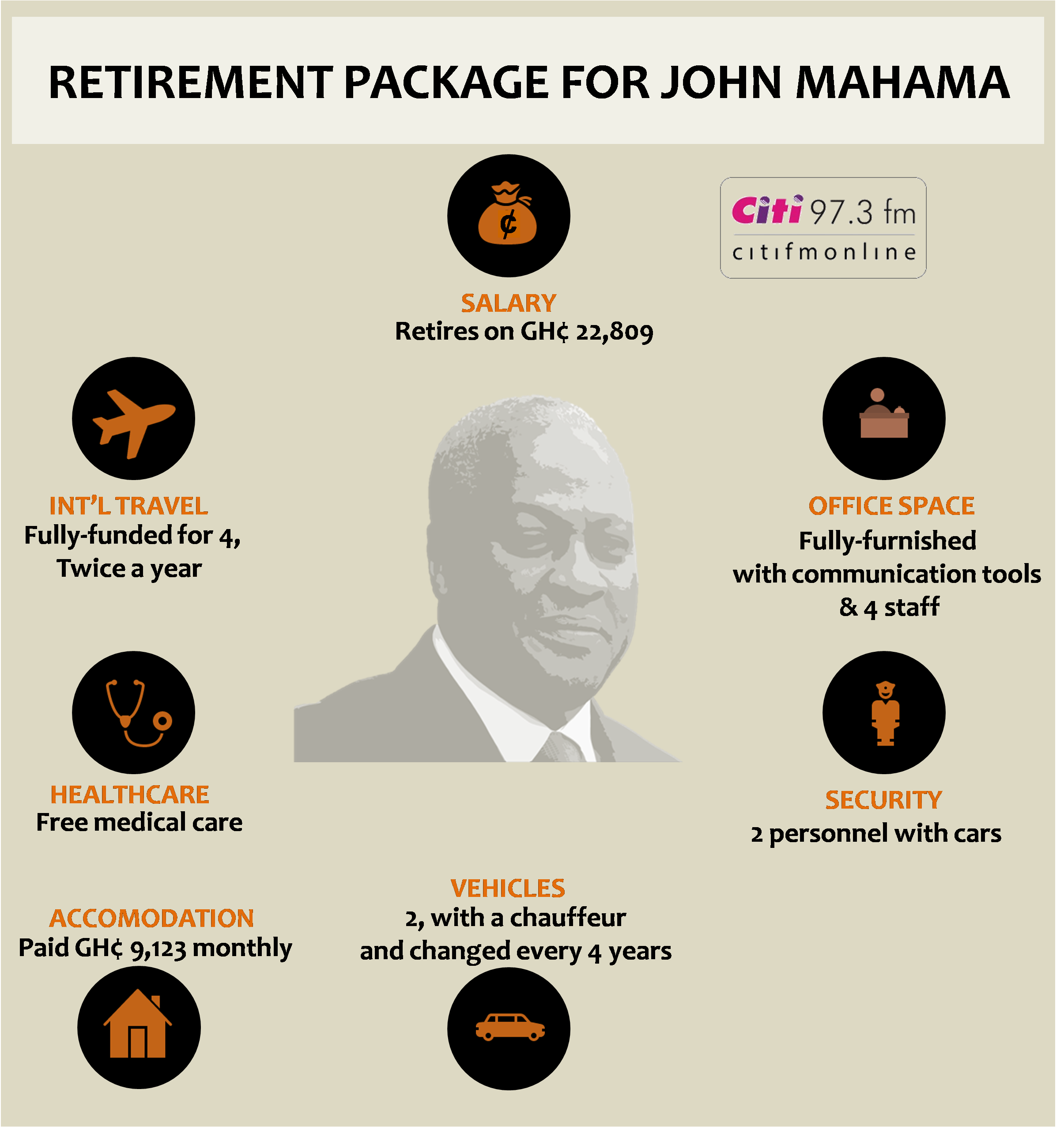
Following his election defeat, the Presidential Emoluments Committee on the conditions of Article 71 officeholders, made the above recommendations on the package to be given to John Mahama for his retirement.
2. A House of teachers and lawyers
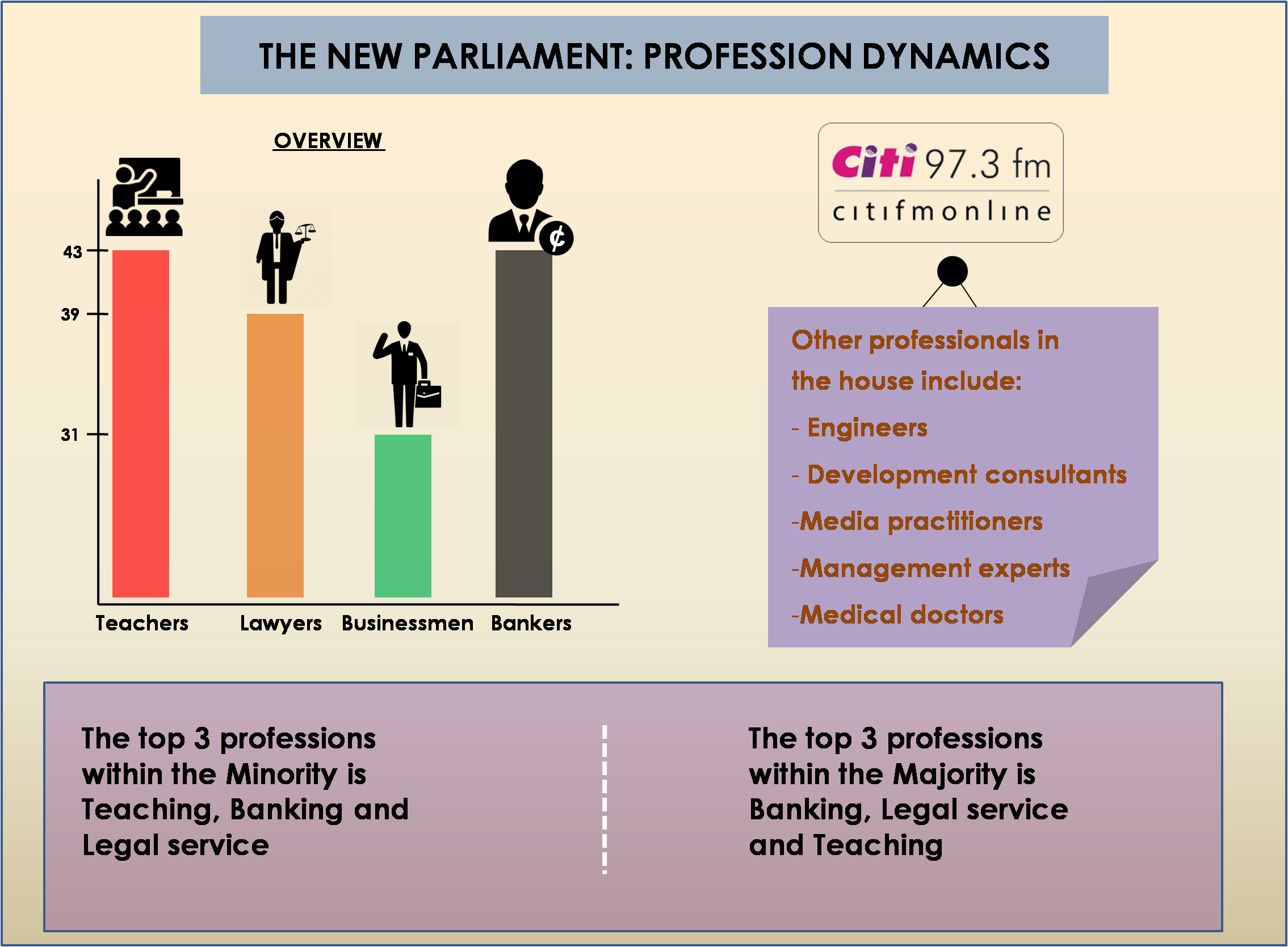
A quick analysis of the professions of all 275 Members of the seventh Parliament of the 4th Republic, showed that the House had majority of its members being teachers and bankers; 43 each.
3. Government size: Nana Addo vs. Mahama
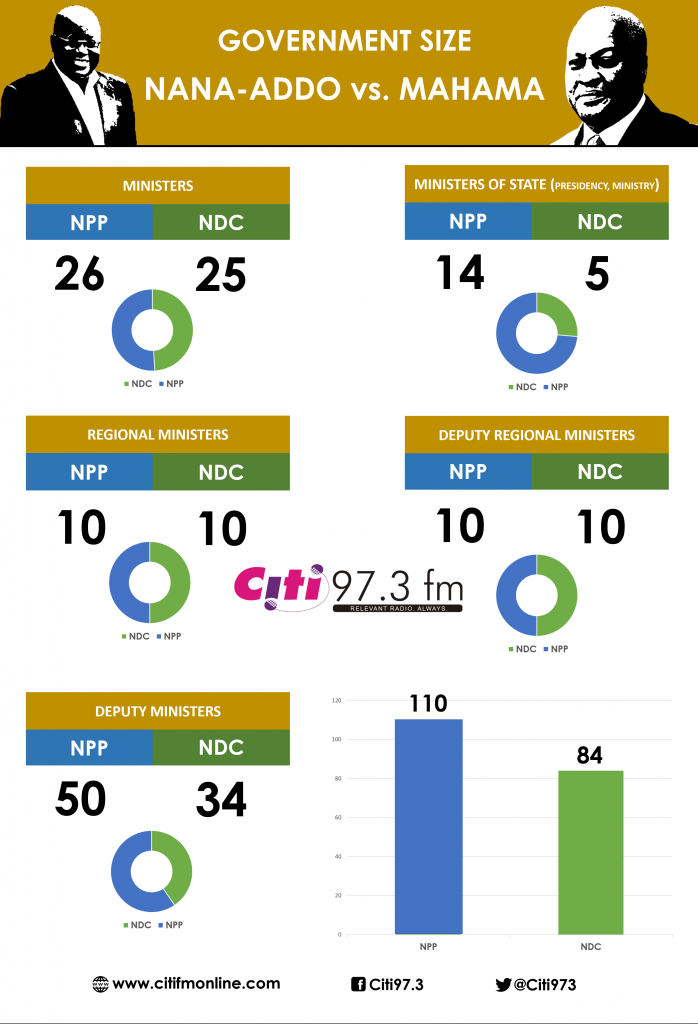
President Akufo-Addo is the first head of state in the 4th Republic to have more than a hundred (100) ministers serve in his government.
He has beaten his predecessor, John Mahama, by 26 appointees. John Mahama had 84 ministers – deputies included.
4. State of the Nation: Akufo-Add vs. Mahama
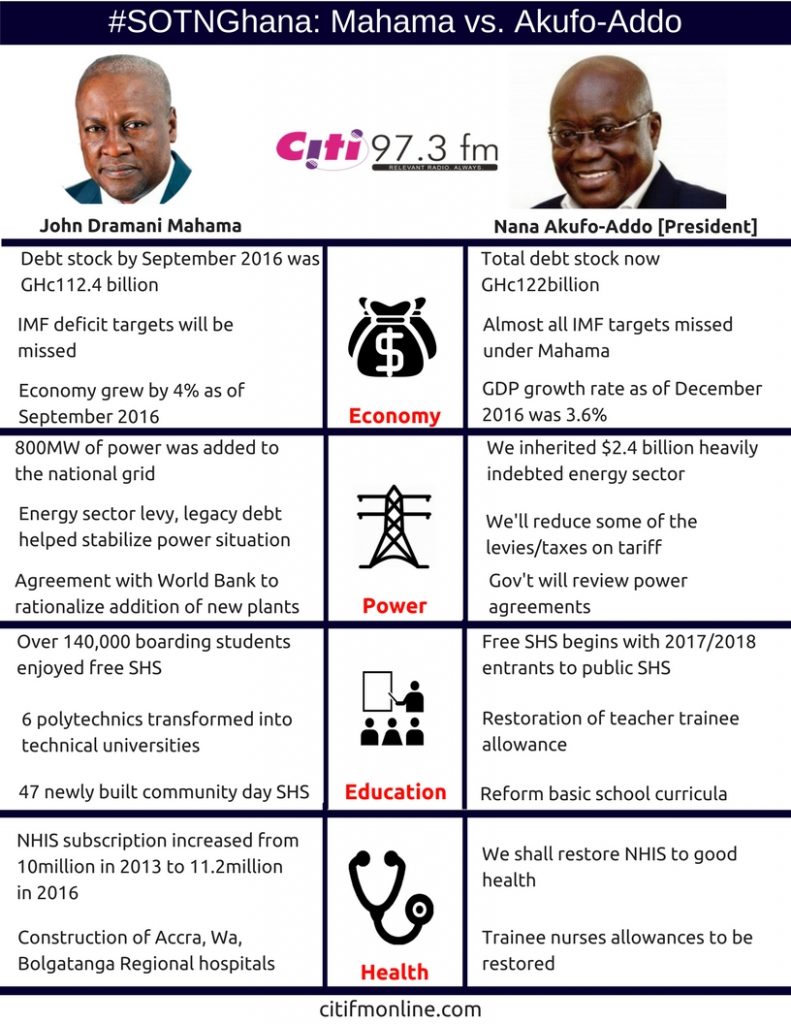
President Akufo-Addo accused the John Mahama administration of increasing the country’s debt stock to about $122 billion from $9.5 billion in 2009.
The President while speaking in Parliament during his first State of the Nation Address further noted that, he inherited a $2.4 billion indebted power sector from the previous government.
The two’s key statements from their statements were compared.
5. Teachers, drivers impregnate 977 teenagers
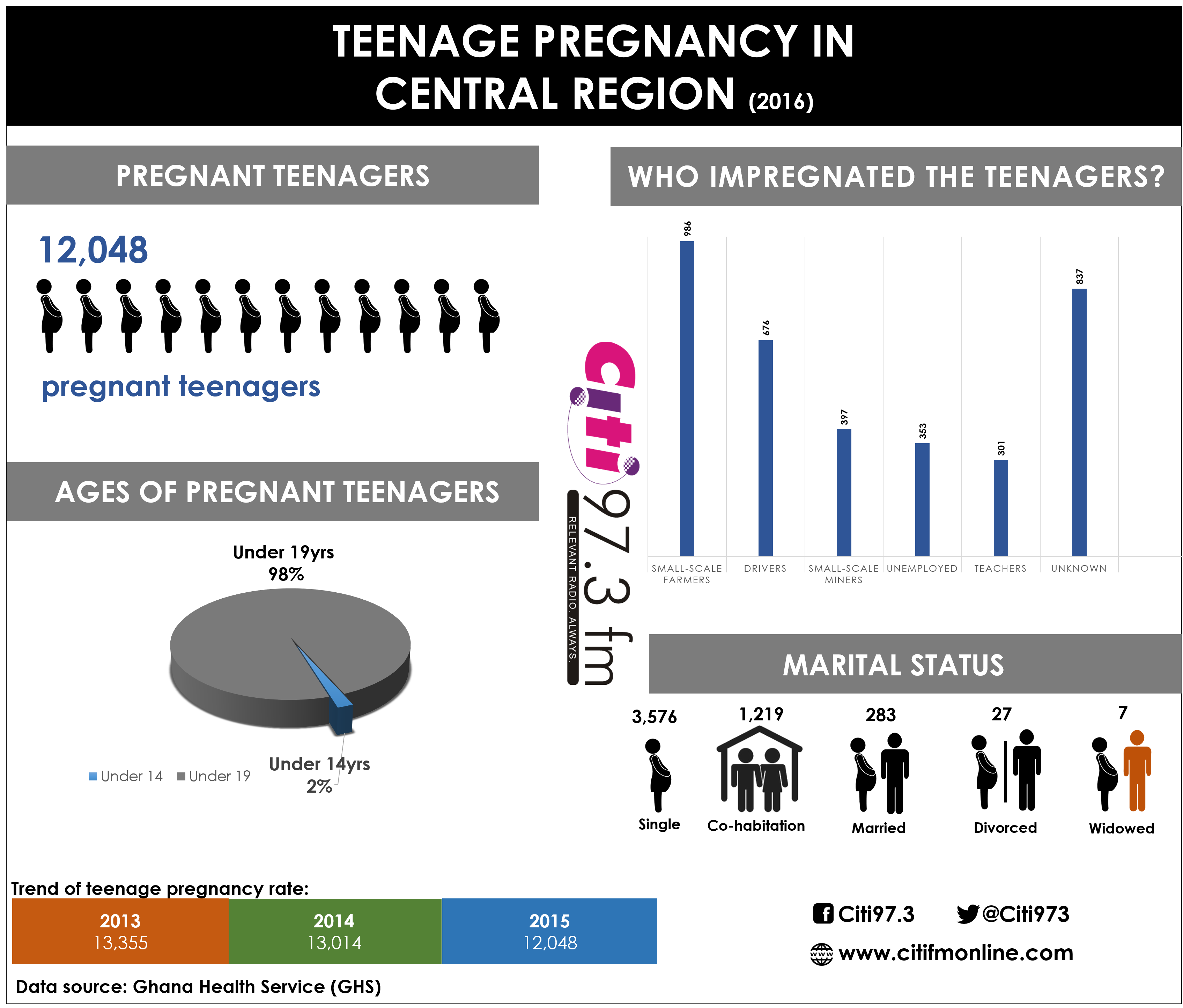
Teachers and drivers according to a performance review of 2016 by Ghana Health Service (GHS) in the Central Region were the worse culprits noted to be impregnating teenage girls.
6. Galamsey fight timeline
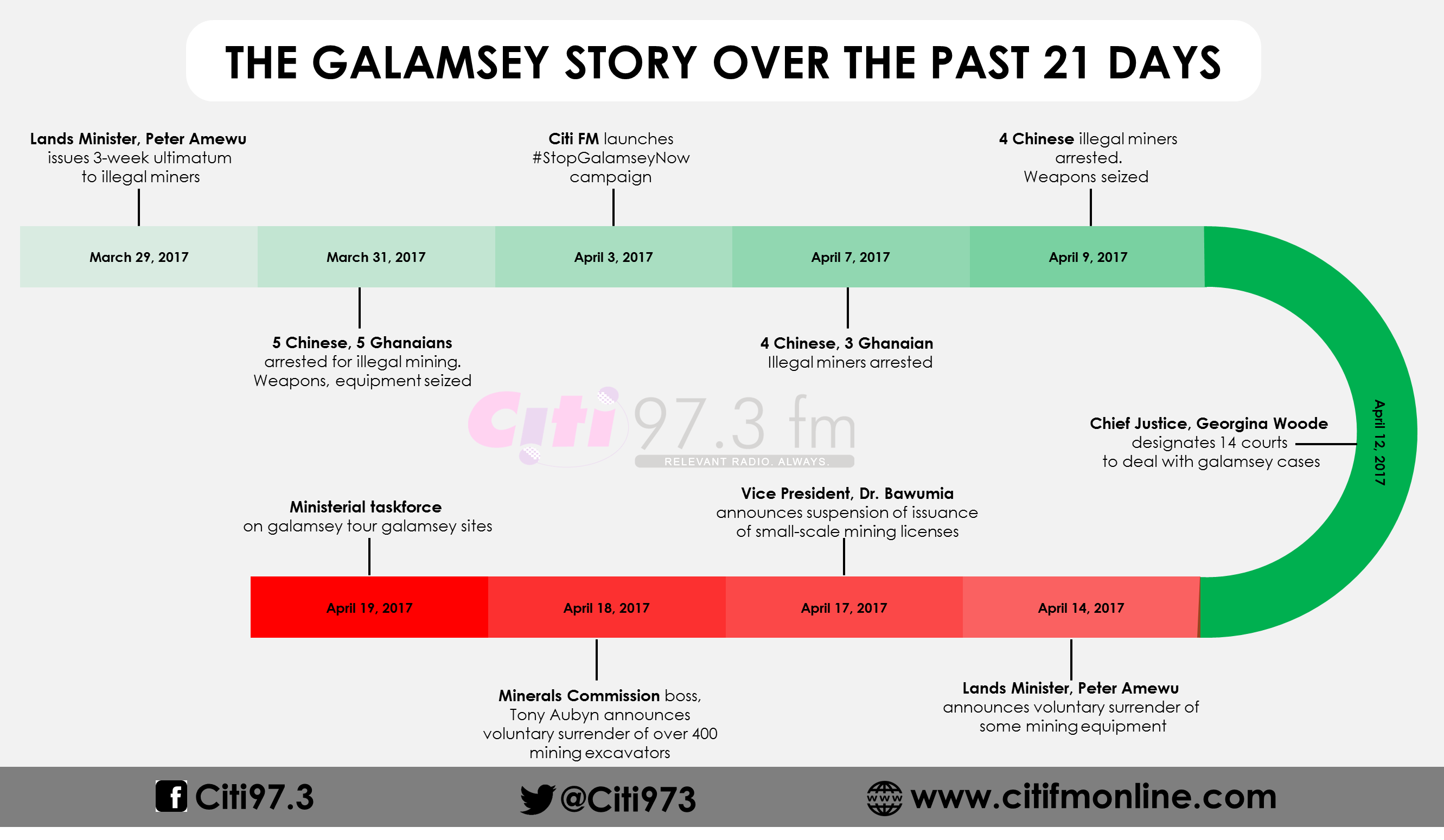
Following the Ministry of Lands and Natural Resources’ declaration of a 21-day ultimatum to all illegal miners to cease their operations and surrender their equipment, a number of significant actions took place, including arrests of some defiant illegal miners.
The anti-galamsey fight which has been championed by Citi FM achieved other positive results [not captured in this infographic] and some key government actions, although the problem of illegal mining still persists in some parts of the country.
7. Outrageous prices at which state vehicles were sold 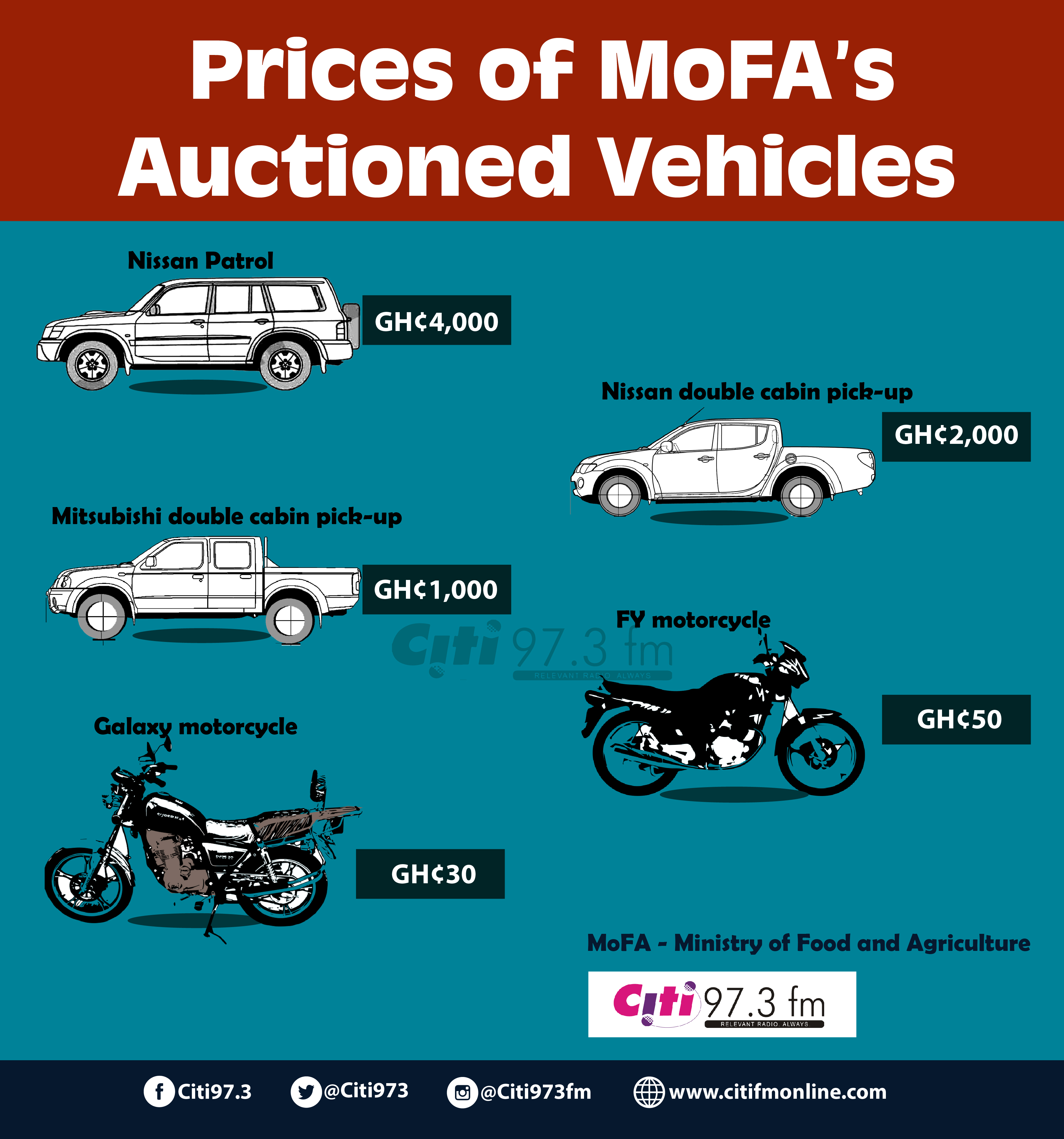
The Ministry for Food and Agriculture blatantly flouted all of the country’s laws regarding the disposal of government vehicles by auctioning some state vehicles for as low as GHc 1,000.00.
A Nissan Patrol S/W with registration number GV 1285 U, was auctioned for GHc4,000, while a Nissan double cabin pick-up with registration number GV 1481 U, was also sold for just GH¢2,000.
8. Major Mahama lynched

Ghanaians were greeted in May with the gruesome murder of army officer, Captain [poshumously promoted to Major] Maxwell Mahama at Denkyira-Obuasi in the Upper Denkyira West District of the Central Region.
His death put the nation in great grief. Following his death and burial, government has instituted a trust fund for him, and some suspects alleged to be involved in his murder have been freed while a few others are still before court.
9. Government secures $19 billion from China
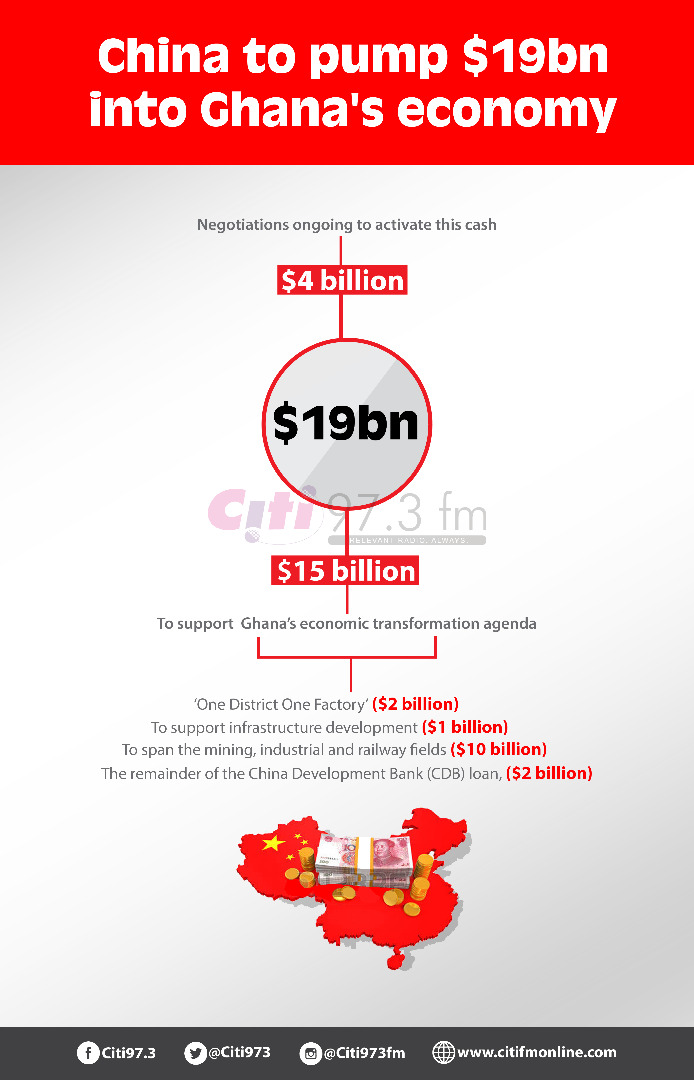
The Vice President, Dr. Mahamadu Bawumia, led Ghana to secure a $19 billion commitment from China to be invested in various sectors of the economy.
10. How many schools are in Ghana?

The infographic shows the widening gap in the availability of educational infrastructure as one moves up the academic ladder between Kindergarten and Secondary education.
While there are over 22,000 Kindergartens across the country, there are only about 800 Senior High Schools in the country.
11. Regional distribution of schools in Ghana
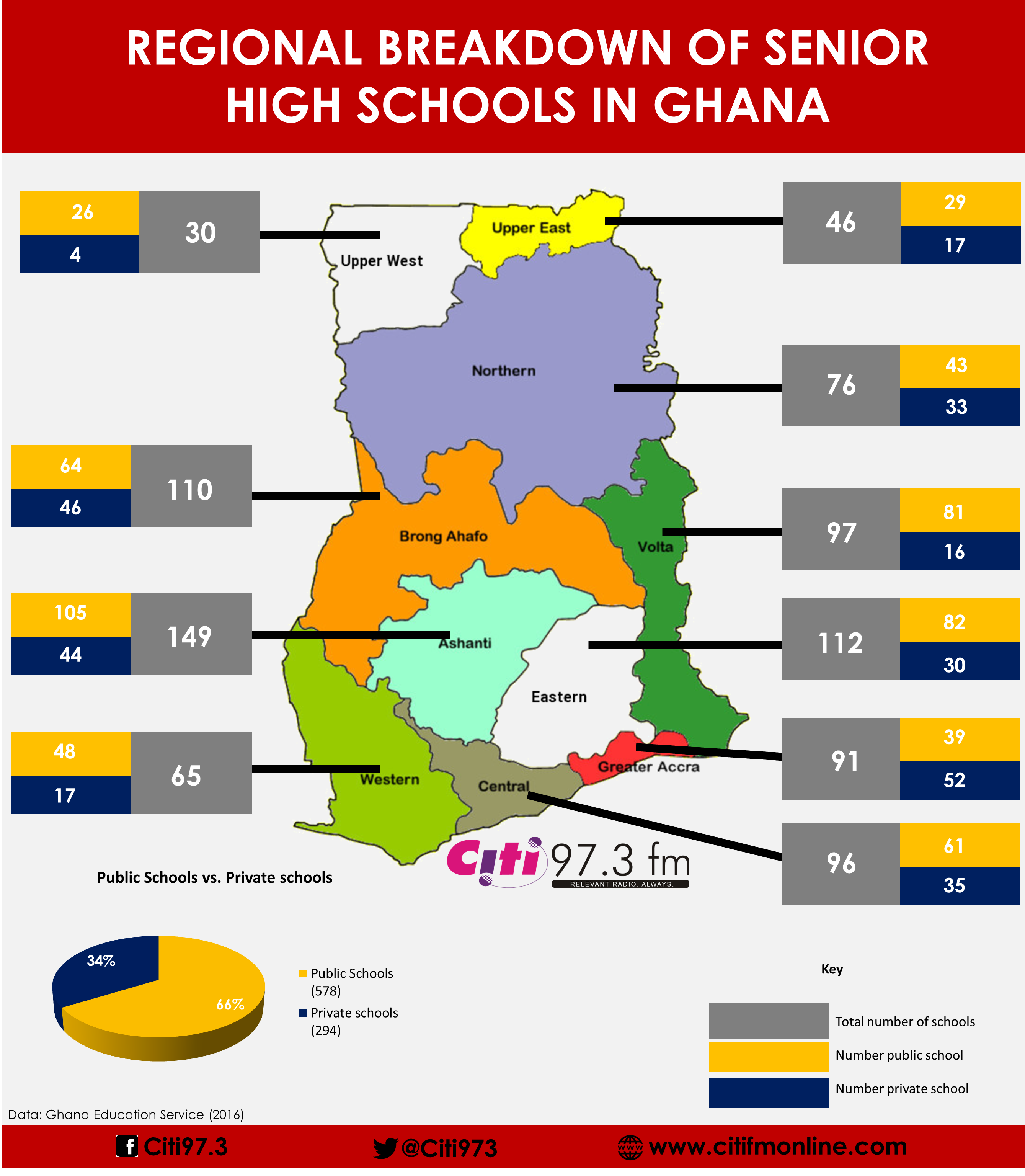
The infographic shows the uneven distribution of schools across the country. The Ashanti Region tops the chart as the region with the highest number of Senior High Schools in Ghana. The Upper West Region has the least number of Senior High Schools, 30, with 26 being public SHSs.
Of the 872 SHSs in Ghana, 66% are government-managed while the remainder is privately owned.
12. BOST’s sale of contaminated fuel
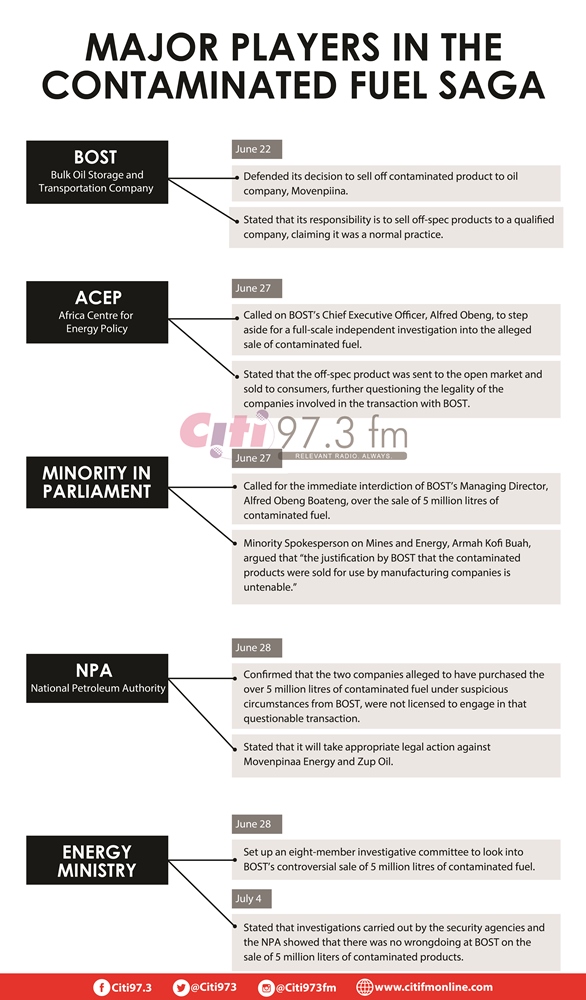
The Bulk Oil Storage and Transportation Company Limited (BOST) came under criticism for selling 5 million litres of contaminated fuel to two unlicensed companies; Movepiina and Zup Oil, making Ghana lose about GHc 7 million in revenue.
The infographic captures the major stakeholders in the sector and their reaction to the news.
13. Highlights of 27 mid-year budget review
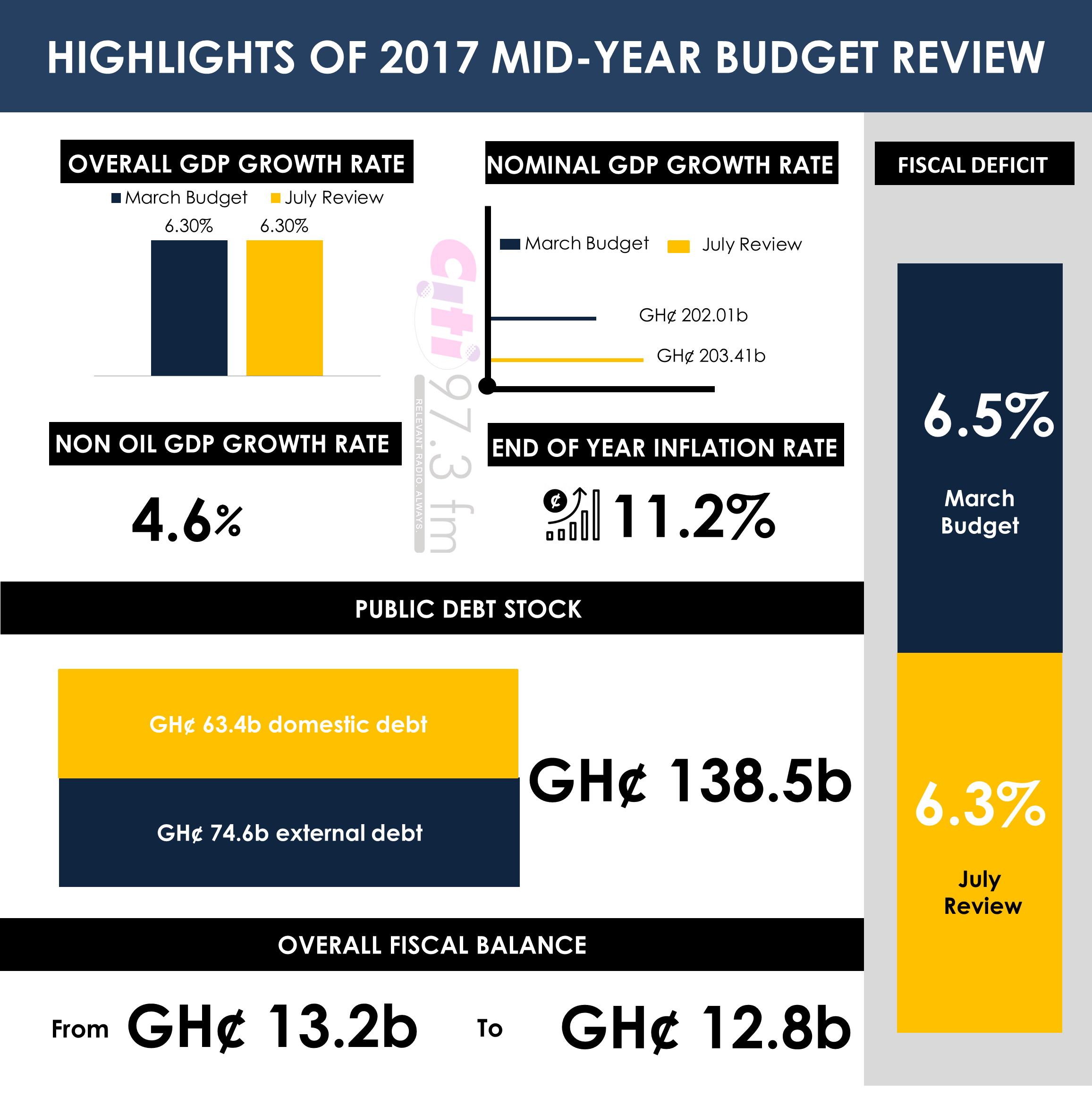
The infographic presents a summary of the review of key economic targets by Finance Minister, Ken Ofori-Atta in July, 2017.
14. $72 million SSNIT software saga
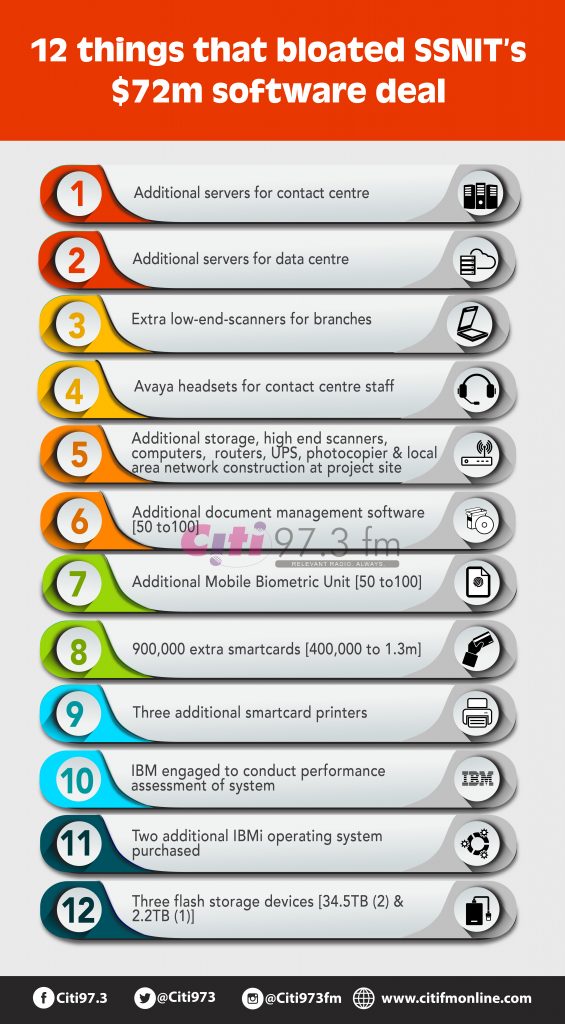
The controversial SSNIT software saga generated a lot of public buzzes after it was revealed that the original contract of $34 million shot up to $66 million an eventually $72 million. The above, according to managers of the project, accounted for the exponential increase in cost.
15. Ghana wins landmark ITLOS dispute
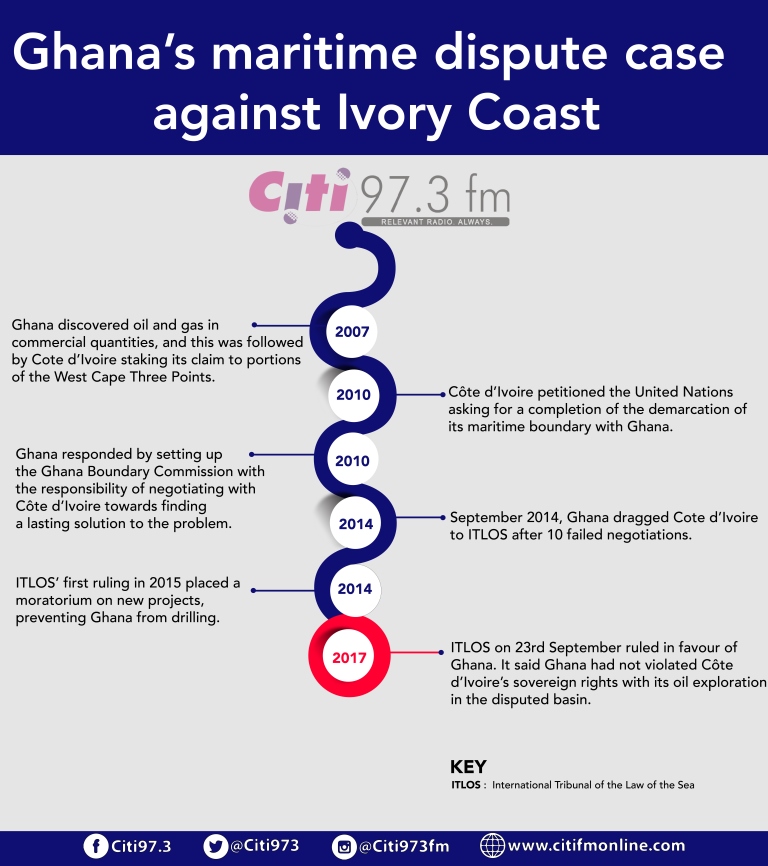
The Special Chamber of the International Tribunal of the Law of the Sea (ITLOS), has ruled in favor of Ghana in a three-year-long maritime dispute with Côte d’Ivoire.
The Chamber in a unanimous decision on Saturday, September 23, 2017, ruled that there has not been any violation on the part of Ghana on Côte d’Ivoire’s maritime boundary.
16. 131 radio stations sanctioned by NCA

Some 131 radio stations were sanctions by the National Communications Authority (NCA) for various infractions against their operating guidelines.
Their offenses included operating without license and failure to renew operation license.
17. 57 cheating fuel stations sanctioned
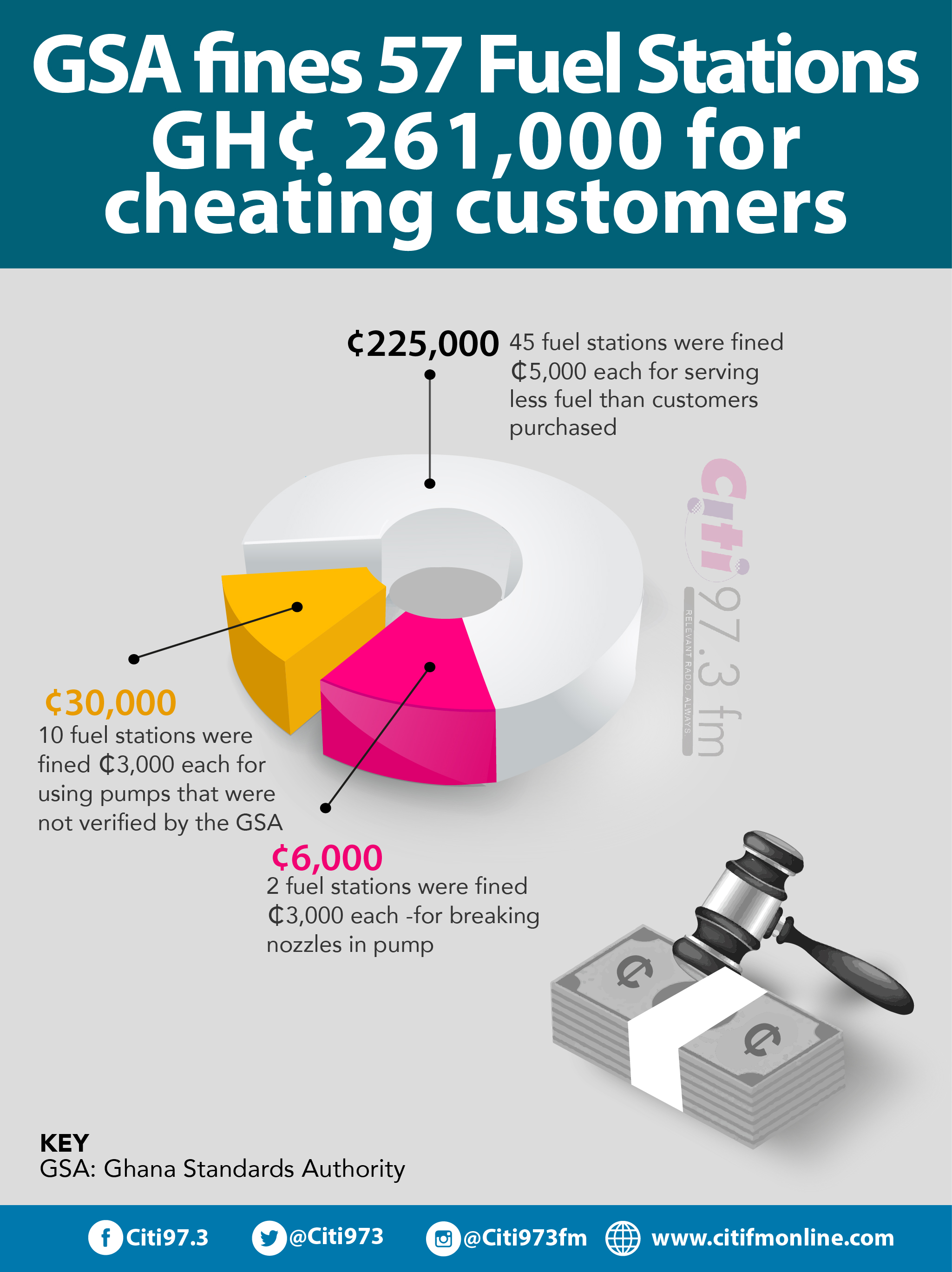
The Ghana Standards Authority (GSA), has sanctioned 57 fuel stations in Accra found to have engaged in infractions detrimental to the interest of consumers.
They were fined a total of ¢261,000 for serving customers with lower volumes of fuel, using non-approved GSA seals, and breaking GSA seals meant to stop cheating at the pumps.
18. How 2018 budget slashed some ministerial allocations
- Administrative sector
- Social
- Public Safety
- Infrastructure
- Economic
The Roads and Highways ministry had its budget slashed by at least 80% from GHS444 million to GHS77 million.
The Youth and Sports Ministry also had its budget cut by about 20% from GHS47 million to GHS33 million.
–
By: Jonas Nyabor & Melvin Clottey/citifmonline.com/Ghana
Source: citifmonline.com


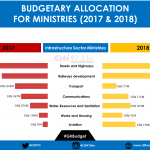
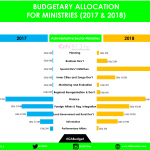
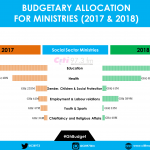


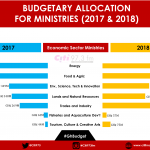
Comments